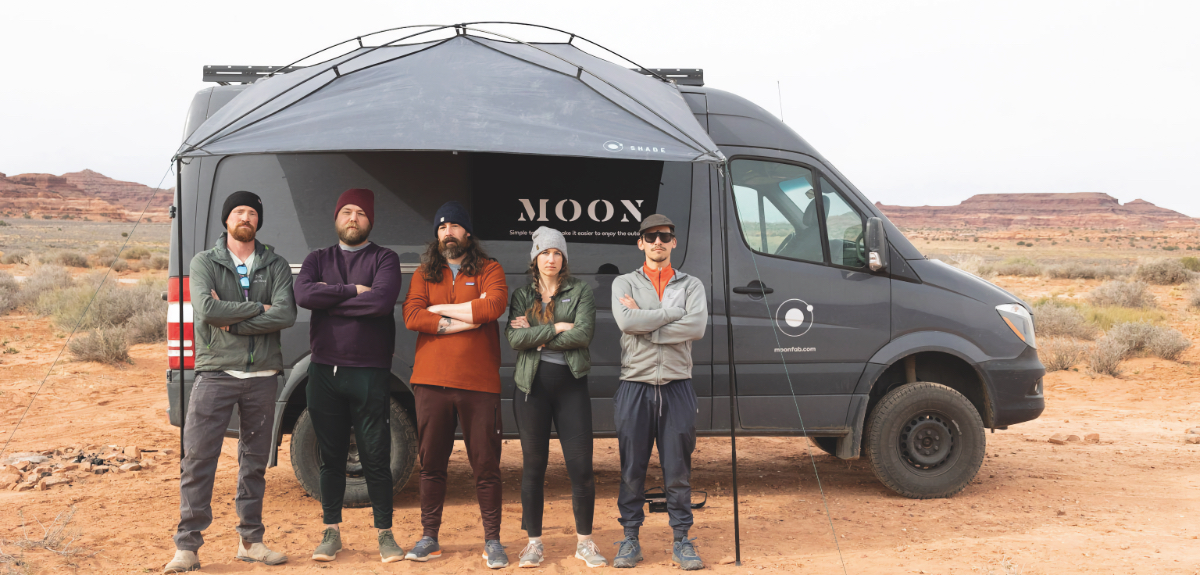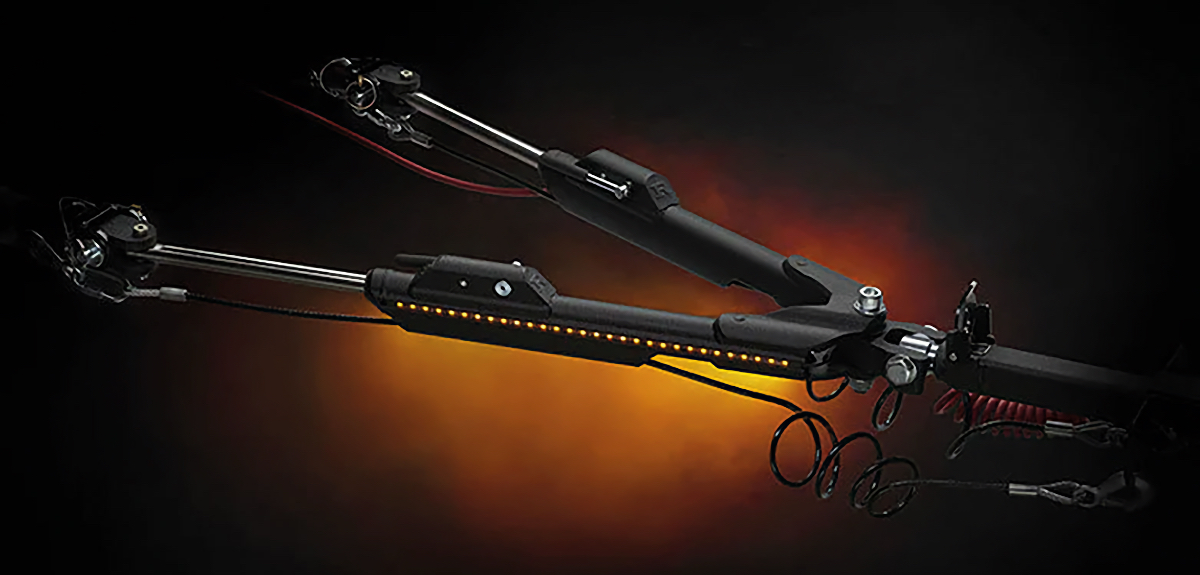Portable Power Stations Versus Gas-Powered Generators: Which is Right for You?
Both Power Sources Have Their Place, But Which One Makes Sense for Your Needs?
Image Caption: Photo Credit: Champion and EcoFlow
Whether you’re looking for a backup power solution for use at home or a way to bring electricity to the campsite, there are now several options to choose from. In the past, a gas-powered generator was the best choice for either of those roles, but thanks to technological advances, portable power stations have become a viable alternative. However, both power sources have pros and cons, and choosing the right one for you can be more challenging than ever.
On paper, generators and power stations offer similar functionality, creating power for use in places where electricity doesn’t exist. But in reality, how these two types of devices work is very different. Which one makes the most sense for your needs depends on a number of variables. Here’s what you need to know to help make that decision.
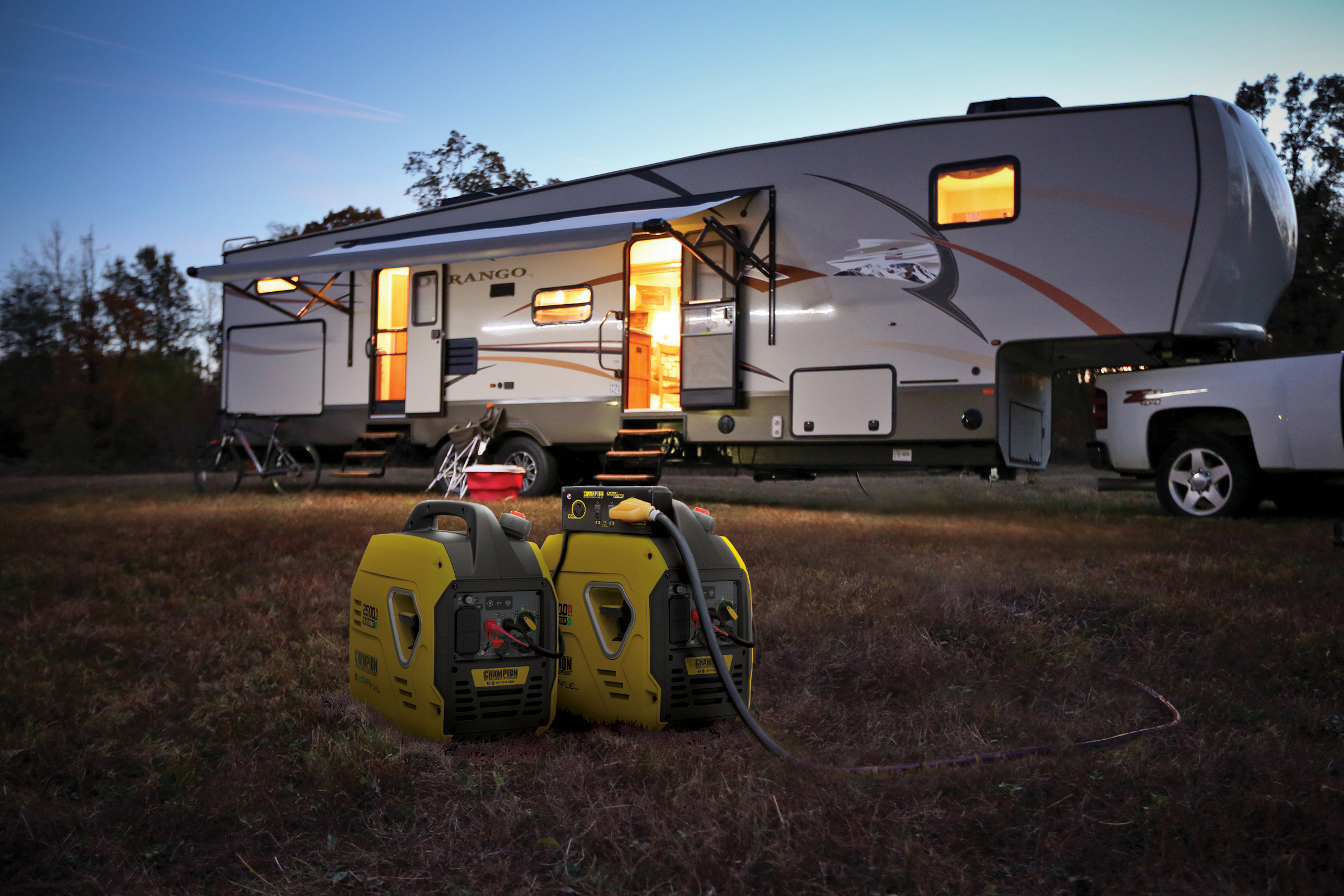
Image Courtesy of Champion Power Equipment
What is a Generator?
A generator is a device that burns fuel—such as gasoline, diesel, or propane—to create electricity. When powered on, a motor converts the fuel source to electricity, which is, in turn, supplied to the user via a set of integrated power ports, including 120V AC outlets like those found in your home.
How much electricity a generator creates depends on the size of the motor. The larger the engine, the more power it can produce, with outputs ranging from 1,000 watts to more than 20,000 watts depending on the model. Unsurprisingly, the size and weight of the generator also increase as performance levels grow.
The advantages of a gas-powered generator include excellent power output and easy access to fuel should you run low. But these machines are also noisy and use combustilbe fuels, which can be a fire hazard. Generators also produce noxious fumes, which makes them completely unsuitable for use indoors.
Modern generators come in a variety of sizes and weights, ranging from small and lightweight to large enough to require built-in wheels to move around. Some can use multiple types of fuel—like both gasoline and propane—which adds to their level of versatility. You’ll even find some RVs that come with a built-in generator, which can provide power to the entire vehicle when camping off-grid.
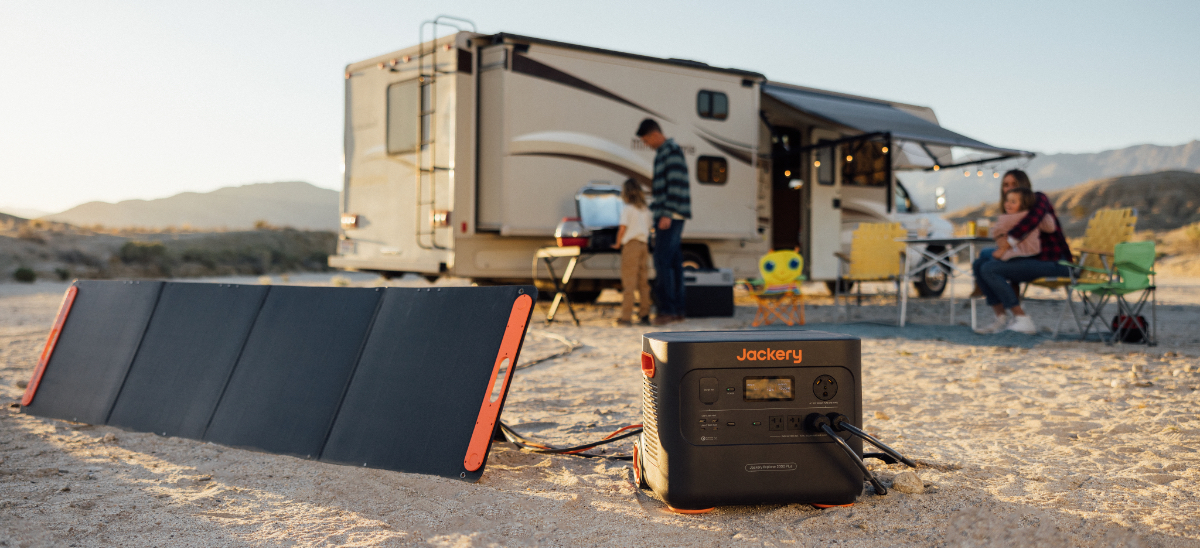
Photo Credit: Jackery
What is a Portable Power Station?
A portable power station is a device that uses a large battery pack to store electricity for future use. The battery charges using an external power source, like an electrical wall outlet at home, the 12V port in a vehicle, or a solar panel. Built-in charging ports usually include 120V AC outlets, 12V DC ports, and USB ports, making it easy to recharge electronic devices and run small appliances no matter where you go.
A power station’s storage capacity—usually measured in watt-hours—and power output (watts) directly impact its size and performance. Devices with less capacity and output are smaller and more portable, while units that produce more power are larger and heavier. Smaller units are perfect for recharging smartphones, tablets, and other gadgets, while larger models can power an RV or even a home. Some models can also expand their capabilities using external battery packs that enhance storage and output.
Portable power stations are extremely quiet and don’t give off any emissions, making them an excellent source of power at the campsite or at home. They are also very eco-friendly, with the option to use solar panels to recharge. But solar charging can be slow and unreliable, making it difficult to replenish larger battery packs in a timely fashion. And while these devices have gotten more powerful in recent years, they still don’t produce as much power as a high-capacity gas generator. Most don’t exceed 3,000 watts, compared to some generator’s that have a power celing of over 20,000 watts.
The size of a power station’s battery directly impacts how much it can be used. If a unit has a battery that provides 1,000 watt-hours, that means it can output 1,000 watts of power for an hour, 100 watts for ten hours, one watts for 1,000 hours, and so on. That makes monitoring power input and output very important, especially if you’re plugging in appliances like a TV, portable refrigerator, or an electric grill. Thankfully, the vast majority of these devices come with a built-in LCD screen to assist with that process.
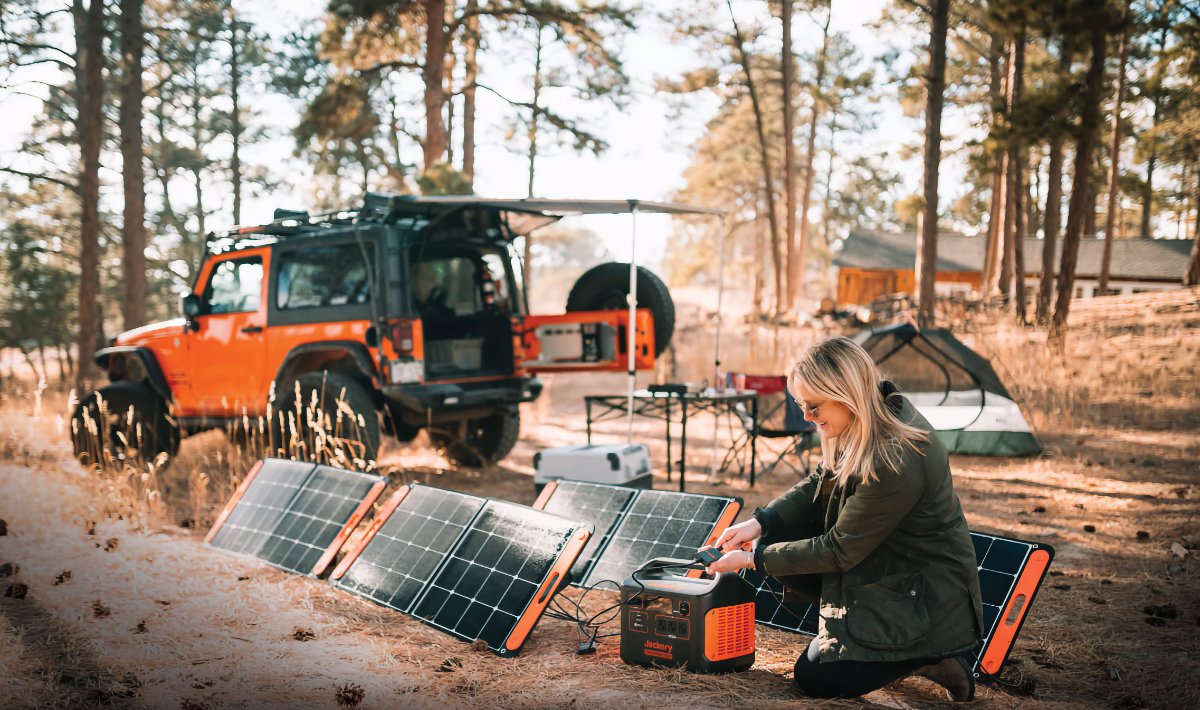
Image Courtesy of Jackery
Generators Versus Power Stations: Which One Makes Sense for You?
As you can tell, there are pros and cons to using both a gas-powered generator and a portable power station. So which one should you go with when you embark on your RV adventures? That depends on your specific needs, how you like to camp, and what gadgets and appliances you take with you.
RVers looking to power their entire motorhome or travel trailer for extended periods of time will likely find a generator to be a better choice. Because these devices can output higher wattages, they are well suited for handling the electrical demands required to run air conditioners, furnaces, water heaters, and residential-style kitchen appliances. And when the generator runs out of fuel, it is very easy to top off the tank and get everything running again.
If you want to use a generator to recharge your smartphone, tablet, or laptop, it is important to buy one that comes with a built-in inverter. These models provide cleaner and safer energy, with fewer power surges or fluctuations. This protects the delicate circuitry found in many gadgets, preventing them from getting damaged while charging. Inverter generators also tend to be quieter and more fuel efficient too.
That said, larger power stations are capable of providing electricity to small or medium-sized RVs, like camper vans and towables. These models, which usually offer expandable storage capacities via external battery packs, can run all of the appliances and components of a motorhome just like a gas generator. However, they do require plenty of solar power to keep them charged and functioning on longer trips, which can be a significant challenge.
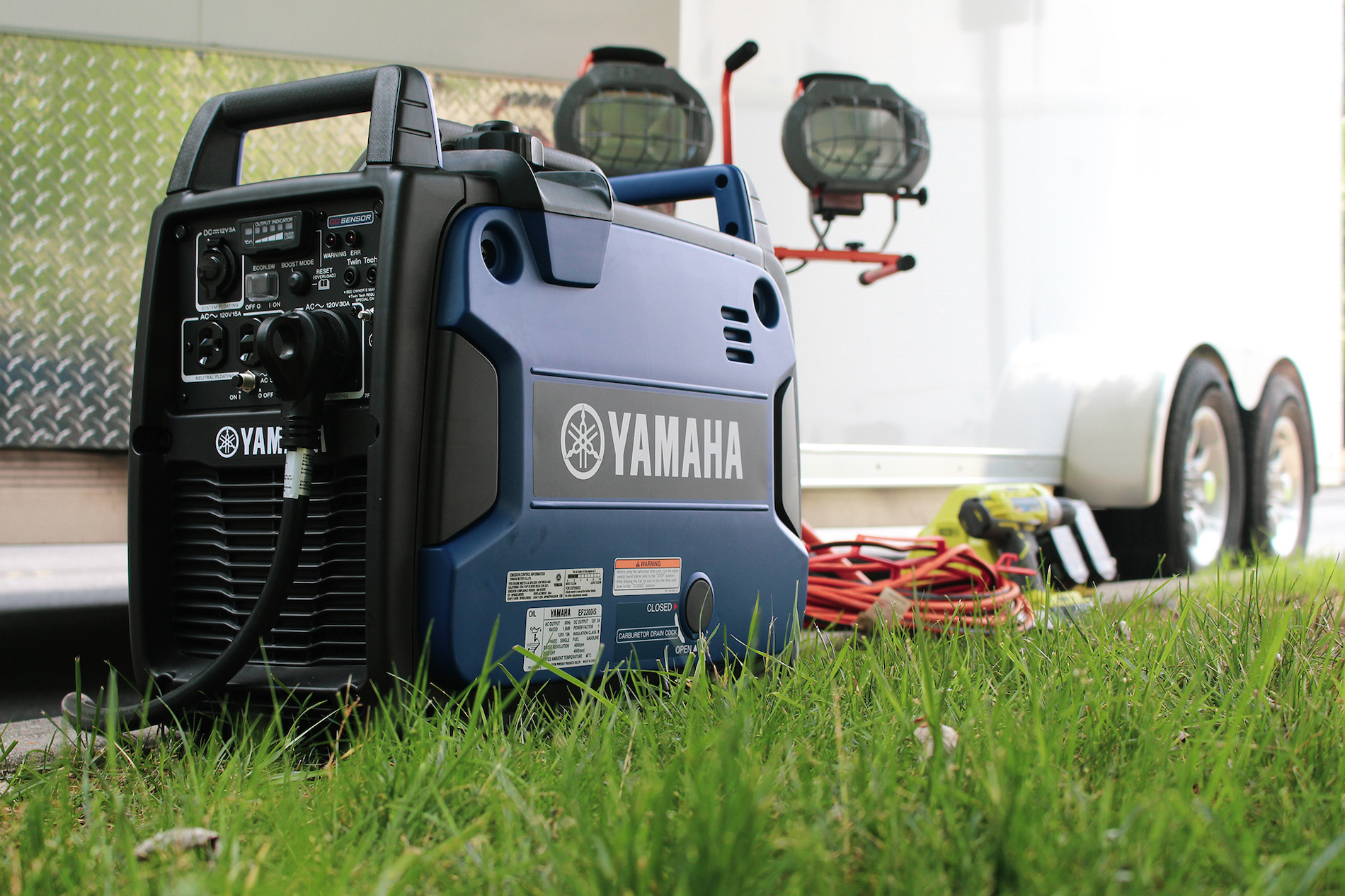
Image Courtesy of Yamaha
If you don’t need to provide electricity to your entire RV, there are a number of reasons why a power station makes a lot of sense. For instance, because these devices are almost completely silent, they can be used at any time of the day at the campground, including during quiet hours. And because they are emissions-free, they are safe to use both inside and outside of your vehicle. They are safer, cleaner, and better for the environment, too.
Power stations also tend to be lighter and more compact than a generator, making them easier to transport. Most have built-in handles that allow them to go just about anywhere, extending their functionality beyond just the campsite. These devices also tend to have a wider variety of charging ports for providing electricity to everything from kitchen appliances and power tools to mobile devices, cameras, and other tech gadgets.
RVers and overlanders who enjoy camping in remote places for extended periods may find a power station to be the better option as well. Their ability to recharge from the sun gives them an added level of versatility that generators lack. True, it can take longer to completely replenish the battery pack using a solar panel. However, if you run out of gas for the generator, it becomes completely useless unless you head into town to get more.
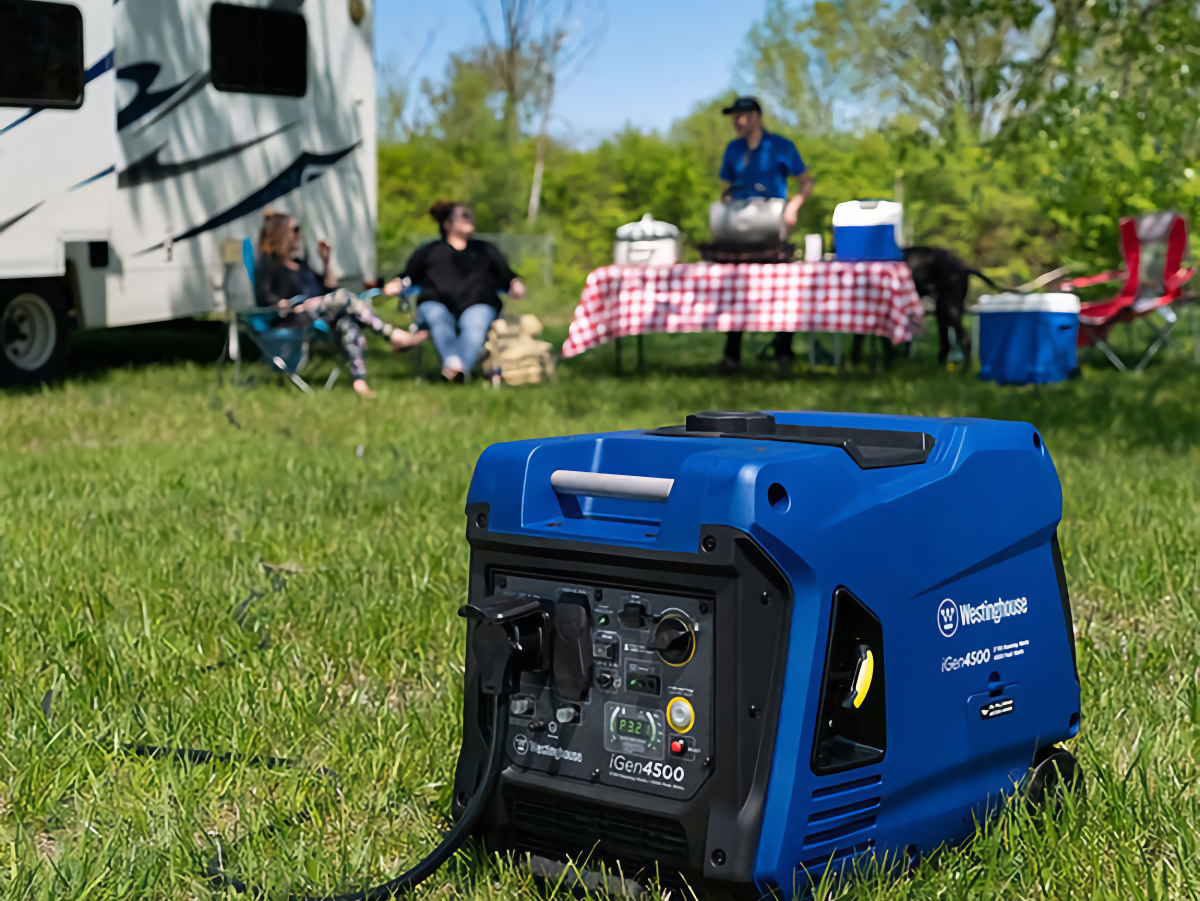
Image Courtesy of Westinghouse
Cost Considerations
Generally speaking, a gas generator costs less than a power station while offering a higher level of power output. That’s because the motors used to create electricity are made from mechanical parts that are much less expensive to produce compared to the technology found in a power station. In other words, you can save some cash—at least initially—by going with a generator.
On the other hand, a generator does require a fuel source to operate, which can quickly add additional expense if you use it extensively. The motor also requires regular maintenance to keep it running properly, and the mechanical parts are more prone to breakdown than those found on a power station. These additional costs can add up over time, quickly closing the gap between the two types of devices.
Power stations also come in various sizes, with smaller units priced less than most generators. These models are especially attractive to RVers who don’t need a lot of power storage or output but just want a simple and reliable way to charge their devices on the go. And because power stations don’t have a lot of moving parts, they don’t require much in the way of maintenance either.
Depending on the size of the battery pack, charging a power station from an electrical outlet tends to be less expensive than buying fuel for a gas generator. And if you use a solar panel to recharge the unit, you can top off the power cell for free. That can lead to significant savings over the life of the device, although it will still take some time to recoup your initial investment.
It should also be noted that a power station’s batteries won’t last forever. Most new models now use lithium iron phosphate (LiFePO4) power cells, which can be recharged several thousand times throughout their lifespan. Still, over time, they will lose capacity and become less efficient before eventually they stop working altogether. In contrast, if a generator is properly maintained, it can continue to function at a high level for many years, with only occasional repairs and part replacement.

EcoFlow RIVER 2 Series Portable Power Stations
A Clean Energy Future
We’d be remiss if we didn’t mention that gas-powered generators have come under scrutiny recently due to their use of fossil fuels that create potentially harmful emissions. The state of California has even passed regulations banning the sale of these devices starting in 2028. It seems likely that other states will follow with similar legislation in the future, pushing consumers to use more eco-friendly power sources instead.
It is important to point out that the California ban is on the sale of generators and not their use. That means if you already own one, you won’t have to stop using it while camping in the state. You simply won’t be able to drop by a local store and purchase a new one.
Because power stations offer a clean, eco-friendly alternative to a gas generator, they are quickly gaining popularity with RVers, overlanders, and other outdoor enthusiasts. And as technology continues to evolve, we’ll eventually get models that match or exceed the power output of traditional generators. For now, though, we’ll just have to continue using the tools that we have and selecting the ones that work best for our lifestyle and needs.
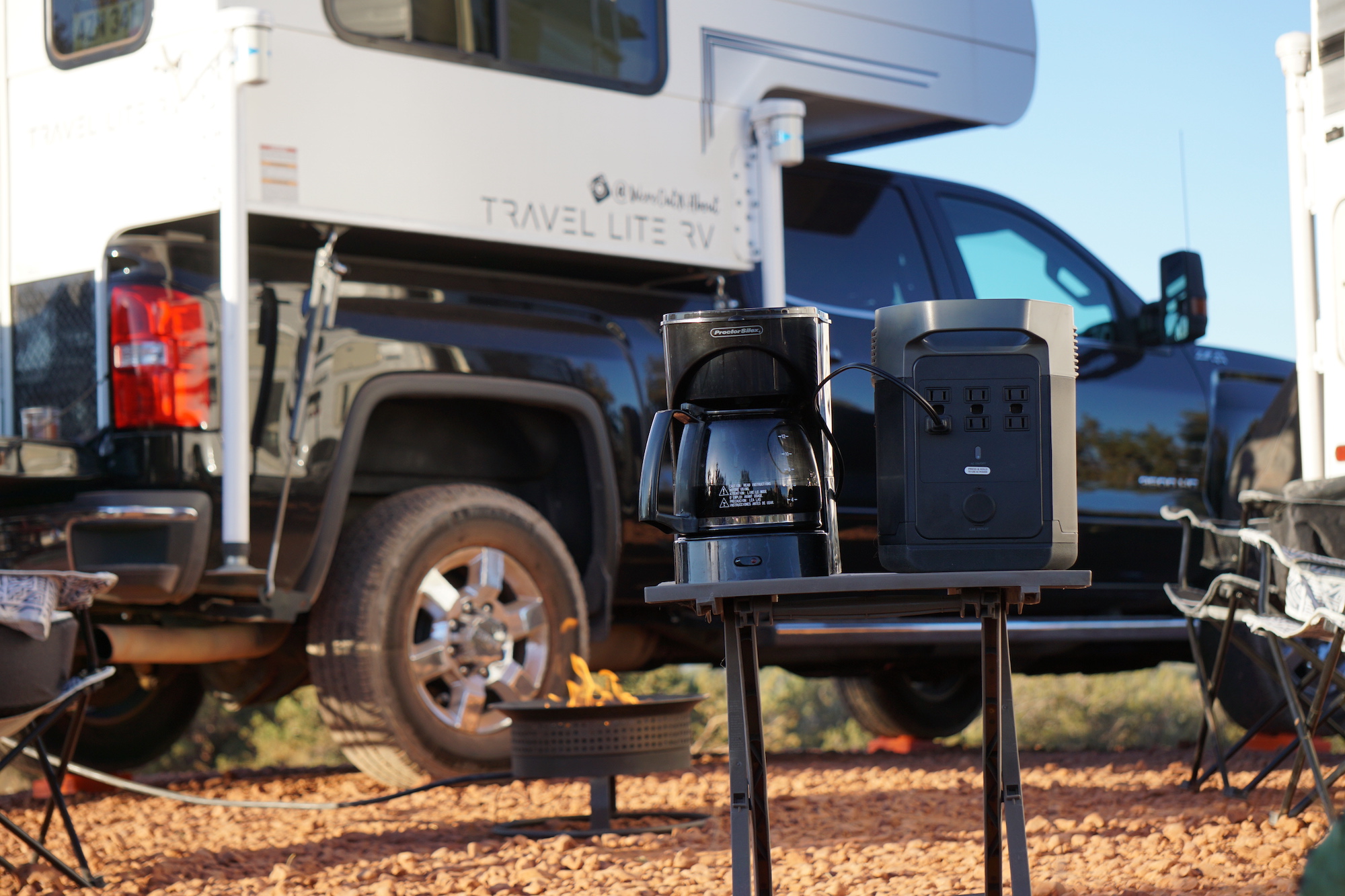
Photo Credit: EcoFlow
Closing Thoughts
Hopefully, this article provides some insights into how generators and power stations are similar and how they are different. Understanding what each brings to the table can help you decide which device makes the most sense for you. Both options come with benefits and trade-offs, which makes it essential to choose the one that supports your camping endeavors. Armed with that knowledge, you can now make a more confident and informed purchase.
Shop for gas generators and power stations at Camping World.

Kraig Becker is a writer in the RV, outdoors, and adventure travel space. Over the course of his career he has contributed to such outlets as Popular Mechanics, Outside Online, Business Insider, TripSavvy, Digital Trends, GearJunkie, The Adventure Blog, and countless others. And avid runner and cyclist, he enjoys camping, hiking, mountain biking, kayaking, and just about any other outdoor activity. His travels have taken him to seven continents and on many amazing adventures.


